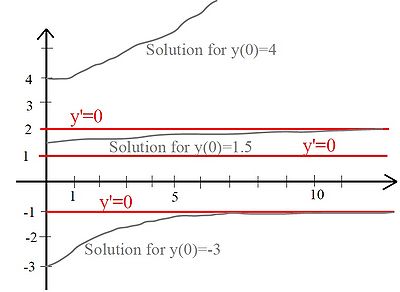Science:Math Exam Resources/Courses/MATH215/December 2011/Question 03 (c)
{{#incat:MER QGQ flag|{{#incat:MER QGH flag|{{#incat:MER QGS flag|}}}}}}
• Q1 (a) • Q1 (b) • Q2 (a) • Q2 (b) • Q3 (a) • Q3 (b) • Q3 (c) • Q4 (a) • Q4 (b) • Q4 (c) • Q5 (a) • Q5 (b) • Q5 (c) • Q6 (a) • Q6 (b) • Q6 (c) • Q7 (a) • Q7 (b) • Q7 (c) • Q7 (d) •
Question 03 (c) |
|---|
|
For the following ODE (c) Determine the and sketch roughly the graph of the solutions for each of the following initial conditions:
|
|
Make sure you understand the problem fully: What is the question asking you to do? Are there specific conditions or constraints that you should take note of? How will you know if your answer is correct from your work only? Can you rephrase the question in your own words in a way that makes sense to you? |
|
If you are stuck, check the hint below. Consider it for a while. Does it give you a new idea on how to approach the problem? If so, try it! |
Hint |
|---|
|
Consider the sign of between the fixed points. |
|
Checking a solution serves two purposes: helping you if, after having used the hint, you still are stuck on the problem; or if you have solved the problem and would like to check your work.
|
Solution |
|---|
|
From (a) we know that the fixed points are given by . In part (b) we calculated that y is increases in and decreases in (-1,1). This means, that starting at , the solution increases towards the critical point . Hence . Starting at , the solution increases towards the critical point . Hence . Starting at , the solution increases. Since there is no larger critical point, the solution increases indefinitely. Hence . |
{{#incat:MER CT flag||
}}














